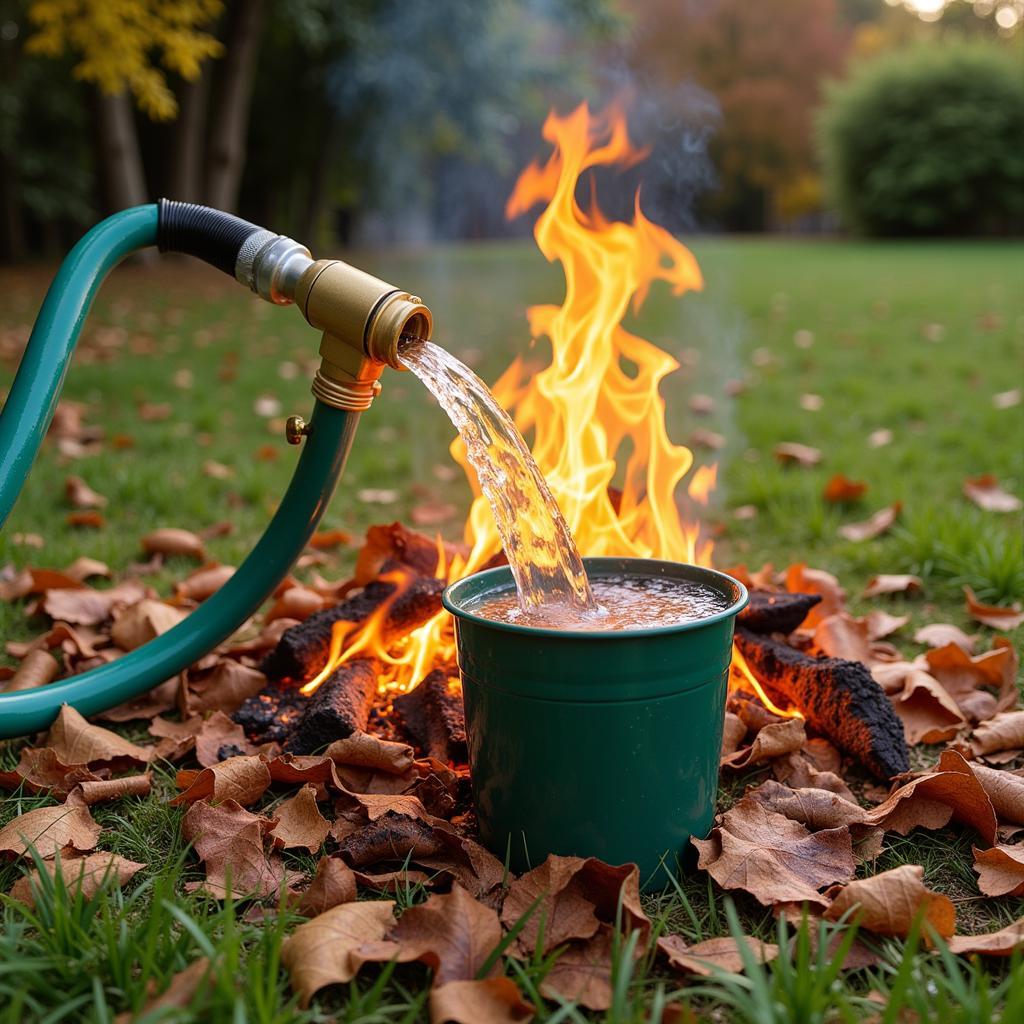Burning leaves is a common practice, especially during autumn. However, it’s crucial to prioritize safety when burning leaves to prevent accidents and minimize environmental impact. This guide offers comprehensive information on how to burn leaves safely and responsibly.
Understanding the Risks of Burning Leaves
Before diving into the safe practices, it’s important to acknowledge the potential hazards associated with burning leaves. Improperly managed leaf burning can lead to uncontrolled fires, air pollution, and health problems. Smoke from burning leaves contains harmful particles that can irritate the lungs and exacerbate respiratory conditions like asthma. Understanding these risks is the first step towards mitigating them.
Burning leaves also releases carbon dioxide, a greenhouse gas that contributes to climate change. While the amount from a single backyard fire might seem insignificant, the cumulative effect of widespread leaf burning can be substantial. Therefore, exploring alternative methods of leaf disposal, such as composting or mulching, is highly recommended whenever possible. These methods not only reduce environmental impact but also enrich your garden soil.
Burning Leaves Safely: Best Practices
If burning leaves is your only viable option, following these safety guidelines is paramount:
- Check local regulations: Before you even gather your leaves, ensure that burning is permitted in your area. Many municipalities have ordinances regulating or prohibiting open burning. Contact your local fire department or city hall for specific information.
- Choose a safe location: Select a site far from buildings, trees, power lines, and other flammable materials. A clear area with a minimum radius of 15 feet from any potential hazards is generally recommended.
- Use a designated container: Burning leaves in a metal container, such as a burn barrel or a fire pit, helps contain the fire and reduces the risk of it spreading. Ensure the container is sturdy and placed on a non-flammable surface like concrete or bare earth.
- Never leave a fire unattended: Constant supervision is essential. Keep a close watch on the fire until it is completely extinguished. Have a water source, such as a hose or a bucket of water, readily available to douse the flames if necessary.
- Avoid burning on windy days: Wind can easily carry embers and ignite dry leaves or other flammable materials, leading to uncontrolled fires. Choose a calm day to burn leaves.
 Water Source for Safe Leaf Burning
Water Source for Safe Leaf Burning
Alternatives to Burning Leaves
While burning leaves has been a traditional practice, several eco-friendly alternatives offer numerous benefits:
- Composting: Composting leaves creates nutrient-rich soil amendment for your garden. Simply pile the leaves in a designated area and allow them to decompose naturally. Turning the pile occasionally speeds up the process.
- Mulching: Shredded leaves can be used as mulch around plants, providing insulation and suppressing weed growth. You can use a lawnmower to shred leaves or purchase a dedicated leaf shredder.
- Yard waste collection: Many municipalities offer yard waste collection programs where leaves are collected and composted or used for other purposes. Check with your local waste management service for details.
Burning Leaves Safely: A Key to Fire Prevention
Following these guidelines can significantly reduce the risks associated with burning leaves. Remember, safety always comes first. By prioritizing safety and considering alternative disposal methods, you contribute to a cleaner and healthier environment for everyone.
What is the safest way to burn leaves?
The safest way to burn leaves is in a designated container, far from flammable materials, on a calm day, with constant supervision and a water source nearby.
Is it legal to burn leaves in my area?
Check with your local fire department or city hall for specific regulations regarding open burning in your area.
What are the health risks of burning leaves?
Smoke from burning leaves contains harmful particles that can irritate the lungs and exacerbate respiratory conditions like asthma.
What are some alternatives to burning leaves?
Alternatives to burning leaves include composting, mulching, and utilizing yard waste collection programs.
How can I minimize the environmental impact of burning leaves?
Consider eco-friendly alternatives like composting and mulching to minimize environmental impact. If burning is your only option, follow safety guidelines strictly.
What should I do if a leaf fire gets out of control?
Immediately call the fire department and attempt to extinguish the fire with a water source, if safe to do so.
What are the best conditions for burning leaves?
Calm, dry weather, far from flammable materials, in a designated container, with constant supervision and a water source readily available.
John Smith, a certified fire safety specialist, advises, “Never underestimate the potential dangers of burning leaves. Always prioritize safety and adhere to local regulations.”
Emily Johnson, an environmental consultant, adds, “Composting is an excellent alternative to burning leaves, enriching your garden soil while minimizing environmental impact.”
For further assistance, contact us at Phone Number: 0902476650, Email: [email protected] or visit our address: 139 Đ. Võ Văn Kiệt, Hoà Long, Bà Rịa, Bà Rịa – Vũng Tàu, Việt Nam. We have a 24/7 customer support team.





